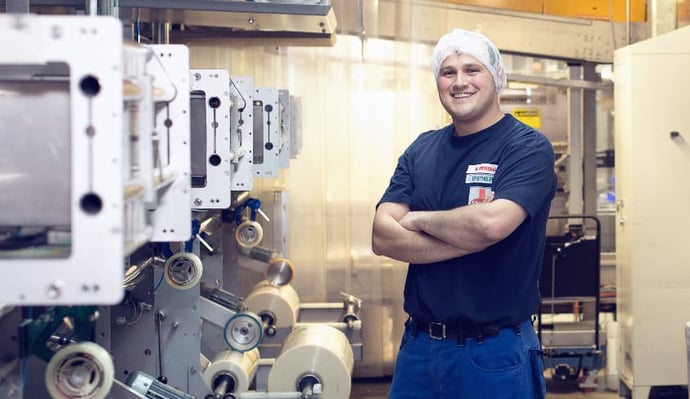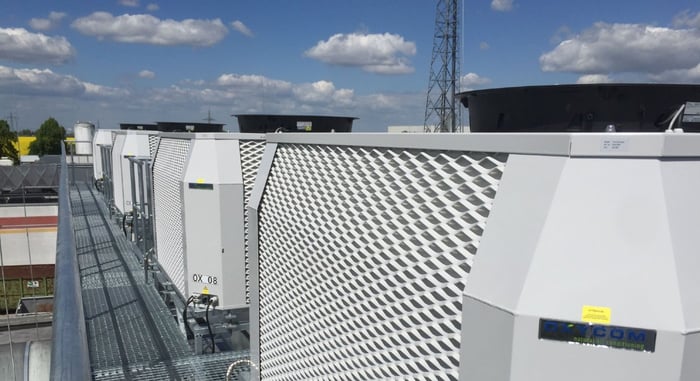As in every other sector within the food industry, bakeries must comply with increasingly strict food safety and hygiene regulations. This is only logical, as it increases and guarantees the quality of the product. However, compliance with these rules is made difficult by the sweltering and uncomfortable climate that usually prevails in bakeries. And relief from this "tropical" indoor climate is often far from ideal due to the strict hygiene regulations.
But how do you solve the heat problem in the bakery while respecting hygiene regulations? This blog answers that question.
Food-safe ventilation: space, spot, and process cooling
In order to cool down the extreme heat released in the production process, an adequate ventilation system is required that uses cooled air to cool down the room, workstations (spot), or cooling zones (process). Such a ventilation system must blow in fresh, cooled and above all filtered air, possibly combined with ionization.
In rooms where many people are present, cooling ventilation can be used to cool the entire room and provide it with fresh, clean air. In this way, the flour dust present in the production environment is removed and replaced by fresh filtered, cooled air.
In order to save energy, spot cooling can be used in large areas where people are only present in specific areas. For example, in the bread packing hall, you can use food-safe air hoses to create cooling zones along the packing line so that employees can work comfortably there. Filtered clean, cooled outside air that is blown into the packaging area with overpressure prevents contamination from other departments.
Want to know more? Read this blog about adiabatic spot cooling
Chilled ventilation can also be used as process cooling. During the cooling process of the freshly baked bread, clean filtered chilled air is then used to cool the bread. The temperature of the introduced fresh air is adjusted so that it is not too cold and not too hot to guarantee the quality of the loaves.
If necessary, ionization can be applied. Ionization is a technique in which you naturally create negative and positive oxygen ions in the airflow. These charged ions attach themselves to fungi, for example. This can, to some extent, render viruses and fungi harmless.
The battle against negative pressure
Not only the heat in the bakery poses a challenge, but negative pressure also presents problems. This occurs when more air is extracted than supplied. As a result, the warm sweltering air stays inside, and uncontrolled airflows are created. This negatively impacts the overall hygiene because contaminants, such as chalk fungus, can circulate freely. Setting up an adequate ventilation system can eliminate the negative pressure and provide overpressure in the areas where it is needed. Overpressure ensures there is enough clean air in a room so that contaminated air from other rooms cannot penetrate.

Cooled ventilation: killing two birds with one stone
By applying cooled, filtered ventilation in the bakery, the heat problem and the underpressure issue are solved. Choosing the right ventilation system is the first step. The industrial bakery Sinnack Backspezialitaten found that the indirect/direct adiabatic systems from Oxycom provided the perfect solution. Especially in the summer, they notice that the systems provide a comfortable working climate. Their full story can be read in the case study "A sustainable indoor climate for optimal working conditions and top quality bread".




